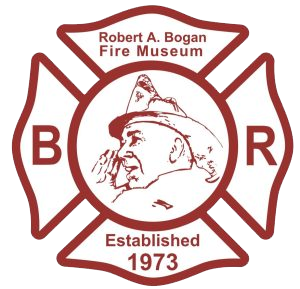HISTORY OF THE BATON ROUGE FIRE DEPARTMENT
1825-1900
The history of the Baton Rouge Fire Department can be traced back to 1825 when ninety-four citizens formed the Baton Rouge Bucket Company. This “bucket brigade” was not a highly organized unit, but was able to cope with the small fires that occurred in the city for over 10 years.
As Baton Rouge continued to expand it became apparent to the citizens that the Bucket Company could not keep pace. In January 1836, the citizenry met in open session to discuss the problem of fire protection and decided to investigate the possibility of purchasing a hand fire engine. Funds were solicited from the citizens and the City Council appropriated two hundred dollars from the treasury to aid the project.
With the prospect of receiving this new equipment several members of the Bucket Company discussed plans for the formation of a volunteer company. It was agreed to name the company Washington Number 1 after the first president whose birthday was celebrated in February, the anticipated date of arrival of the new apparatus. The delivery of the two engines was delayed until July, and by that time a second company had been organized, taking the name Independence Fire Company Number 2. Both companies were activated to service in July 1837. The two companies met the needs of the community for several years, and in 1875 a third volunteer company was chartered under the name Pelican Hook & Ladder Number 1.
The year 1875 marked the beginning of the first organized fire department in the city of Baton Rouge. In March of that year, Andrew Jackson, President of Washington Number 1, met with representatives of the other companies and discussed the possibility of unifying the three agencies. By the end of the month the volunteers had agreed to form a “Fire Board” and select a Chief Fire Officer, who would have complete charge of the three companies at all fires. The Chief Officer was to be aided by one man from each company who would act as an assistant.
Samuel Hart was selected as Chief Fire Officer and chose Andrew Jackson of the Washington Company as First Assistant, Joseph Arbour of the Independence Company was named Second Assistant and Robert Fairie of Pelican Hook & Ladder was Third Assistant.
Hart served as Chief Officer until 1877 when he moved his business to Kansas City. He was replaced by Robert Fairie, who held the position for five years. In 1883, Chief Fairie would not allow his name to be placed in candidacy, and Joseph C. Favrot, a member of the Independence Company was chosen to lead the department.
Under the direction of the Fire Board, the Washington, the Independence and Pelican Hook & Ladder companies carried the burden of fire fighting duties until September 1884. Another volunteer company was organized in that year and took the name Washington Fire Company Number 3. The unit was composed of mainly relatives of the Washington Number 1, and because of the youthfulness of its members was popularly known as the “enfant company”.
Baton Rouge continued to grow and expand and the need for additional fire fighting units soon became evident. The completion of the new water works system, and the fact that expensive equipment would no longer be necessary, prompted a number of citizens to form two additional companies in 1889.
The first of these two companies was organized in February and took the name Jackson Hose Company Number 4, in honor of Chief Andrew Jackson of the old Washington Company. Despite the increase of the city department to five companies, there was still no unit located near the northern edge of town. Invariably when a fire broke out in this section, heavy damage occurred before the department could respond. To remedy this weakness twenty-eight volunteers organized the Schloss Hose Company Number 5 in May 1889.
The fire department continued to grow not only in size but also in efficiency, under the guidance of the Fire Board and Chief Officers. In 1891, Major Andrew Jackson began a four year term as Chief, and the following year, Loucks Hose Company Number 6, the last of the volunteer companies, was organized.
Austin Williams, a member of the Jackson Hose Company, was elected Chief in 1864, and was succeeded by R.A. Hart. Other outstanding Chiefs of the volunteer days were Irenee Pujol, Jules Roux, Joseph Duncan, Hugh Waddill and King Strenzke.
VOLUNTEER COMPANIES SERVING THE CITY OF BATON ROUGE
COMPANY INSERVICE
WASHINGTON FIRE COMPANY #1 1837
INDEPENDENCE FIRE COMPANY #2 1837
PELICAN HOOK & LADDER #1 1875
WASHINGTON FIRE COMPANY #3 1884
JACKSON HOSE COMPANY #4 1889
SCHLOSS HOSE COMPANY #5 1889
LOUCKS HOSE COMPANY #6 1892
